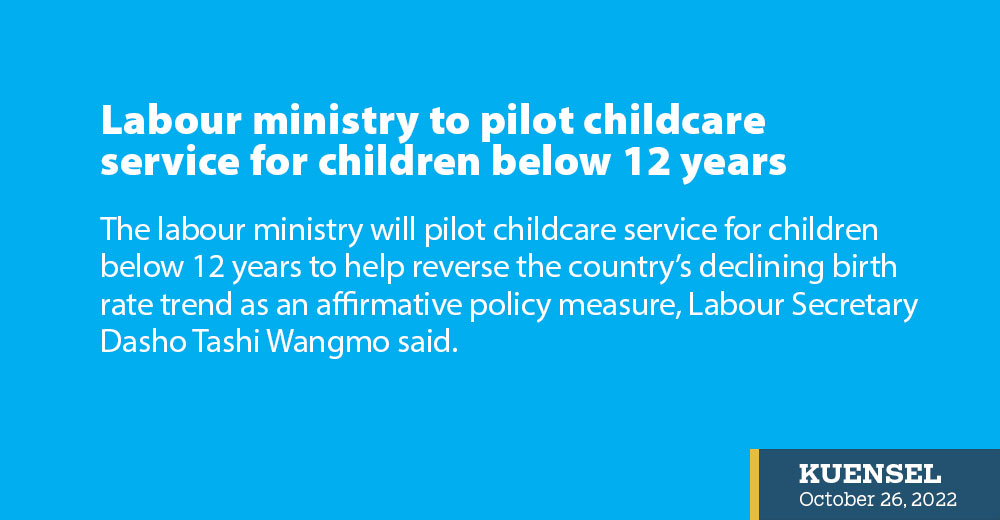Thukten Zangpo
The labour ministry will pilot childcare service for children below 12 years to help reverse the country’s declining birth rate trend as an affirmative policy measure, Labour Secretary Dasho Tashi Wangmo said.
“Bhutan had the highest birth rate at around 20,000 annually in the 1990s. Now the country’s fertility rate has dropped to 1.8 births per woman,” she said.
The fertility rate remains below the replacement level of 2.1 births per woman, according to the population projection report (2017-2047).
By 2047, elderly population, 65 years and above, is projected to increase from 6 percent to 13 percent.
The ministry on October 20 notified the Bhutanese families with children below 12 years who are in need of childcare service and would like to participate in the pilot project for Thimphu and Phuentsholing Thromdes to register with the ministry.
Maximum of 70 participants would be taken for the project in Thimphu Thromde and 30 in Phuentsholing Thromde.
Currently, the ministry is registering the participants.
The ministry also stated that once the ministry receives the cut-off 150 participants for Thimphu and 80 for Phuentsholing for the initial registration, the registration would be stopped.
The project, Dasho Tashi Wangmo said, would not only resolve the working parents’ problems to care for their children but also the difficulty faced by them to get childcare providers.
She added that the pilot project would study the benefits of working mothers and parents to fine-tune for further improvement before it is rolled out in a bigger way across 20 dzongkhags.
The childcare providers could employ their own caregivers aligned proving the terms, conditions, and guidelines of the ministry are followed.
The ministry has carried out an assessment of the cost-benefit study of the project. The project will be piloted for a duration of six months. It is expected to start from November this year.
A study by the Asian Development Bank found that Bhutan’s first demographic dividend phase started after 1995 and is expected to last until 2038.
It added that the country’s demographic dividend peaked in 2013 and is expected to last for 43 years after which it is expected to steadily decline and turn into demographic tax after 2038. “In Bhutan’s 43-year demographic dividend phase, the demographic dividend could have attributed an estimated 1.6 percentage points to economic growth each year.”


